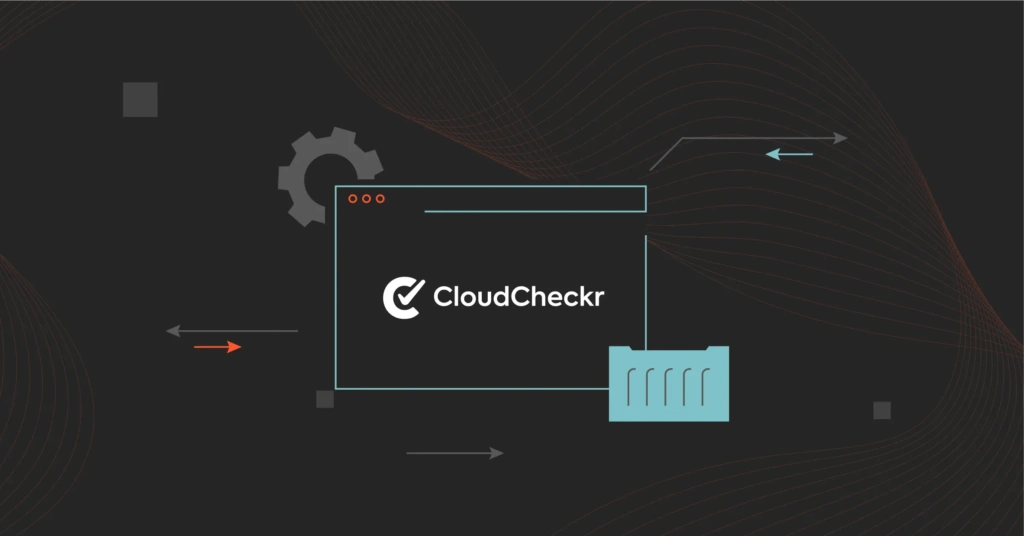With CloudCheckr, users can manage the cost, security, and compliance of their public cloud. It also offers a VMware-to-AWS migration service. But the platform’s multi-level pricing structure can confuse some customers. Others feel CloudCheckr is overkill for their current cloud adoption stage.
This quick guide walks you through cloud management tools like CloudCheckr. These CloudCheckr competitors also offer:
- Right-sizing computing resources
- Selecting suitable Reserved Instances (RI) in AWS and Azure
- Optimizing spot instance bids and utilization
- Support multi-cloud management
- Detect and merge idle resources
- Find and eliminate unmatched and unused resources
By the end, you’ll be able to choose which CloudCheckr alternative will be the best fit for your specific needs.
1. CloudZero
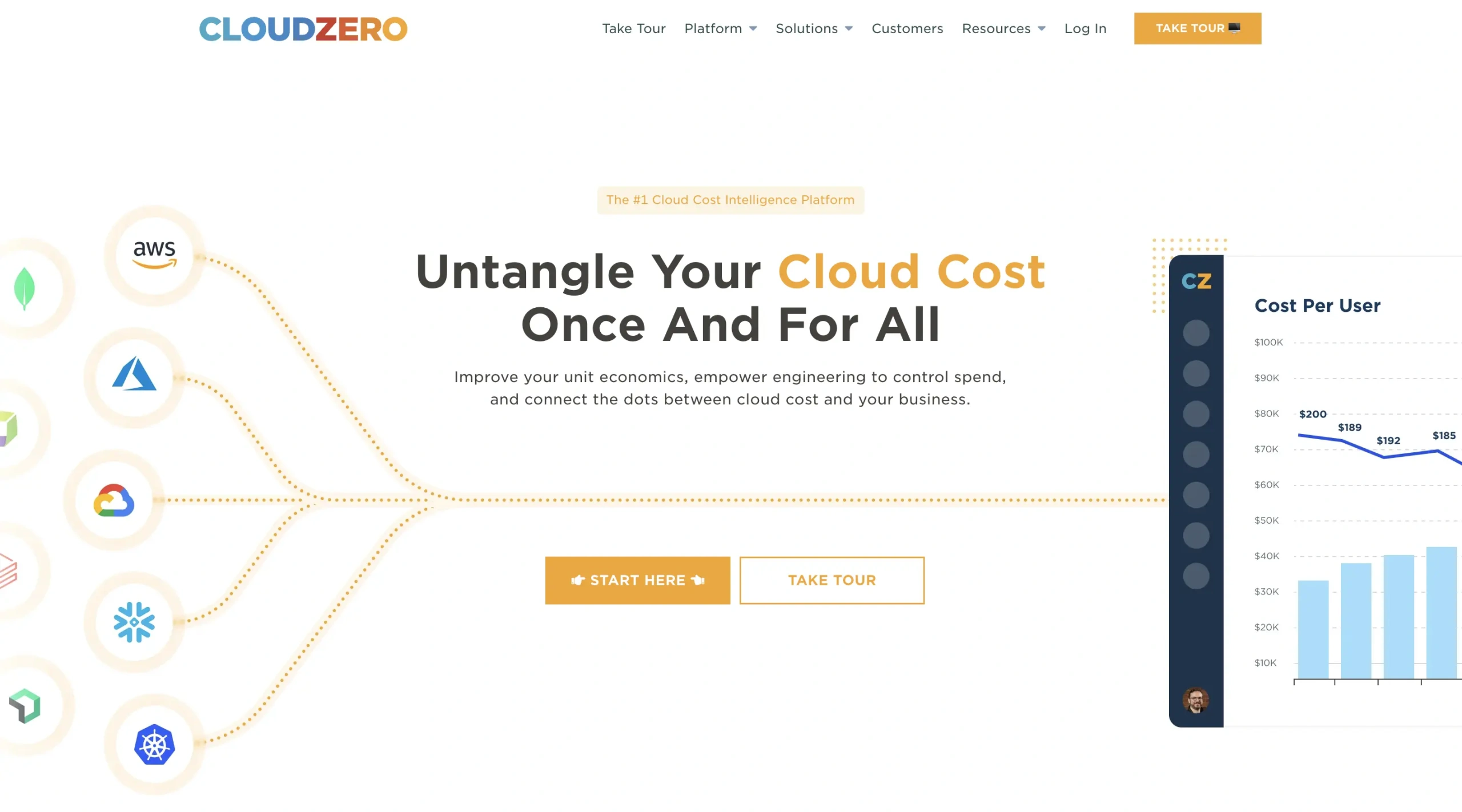
Year founded: 2014
Category: Modern Cloud Cost Intelligence
Best for: Businesses of all sizes looking to link cloud costs to actual business activities
Pricing model: Pricing custom to your environment, NOT a percentage of your cloud spend
The CloudZero platform provides modern, software-driven companies with a rich, easy-to-use, and exact way to see, understand, and take action on real-time cloud costs. Engineers, finance teams, and executives all get access to a visual representation of how their decisions affect cloud spend.
With CloudZero:
- Engineers can tell how their architectural choices affect costs. They can see this as cost per feature, cost per development team, cost per engineering project, and so on.
- Finance teams can determine which customers are most expensive to support and set profitable SaaS pricing tiers to improve profitability.
- Management can compare the company’s Cost of Goods Sold (COGS) and Gross Margin with industry standards.
CloudZero’s MAP Dashboard helps AWS Migration Acceleration Program customers ensure an efficient cloud migration process to avoid going over budget.
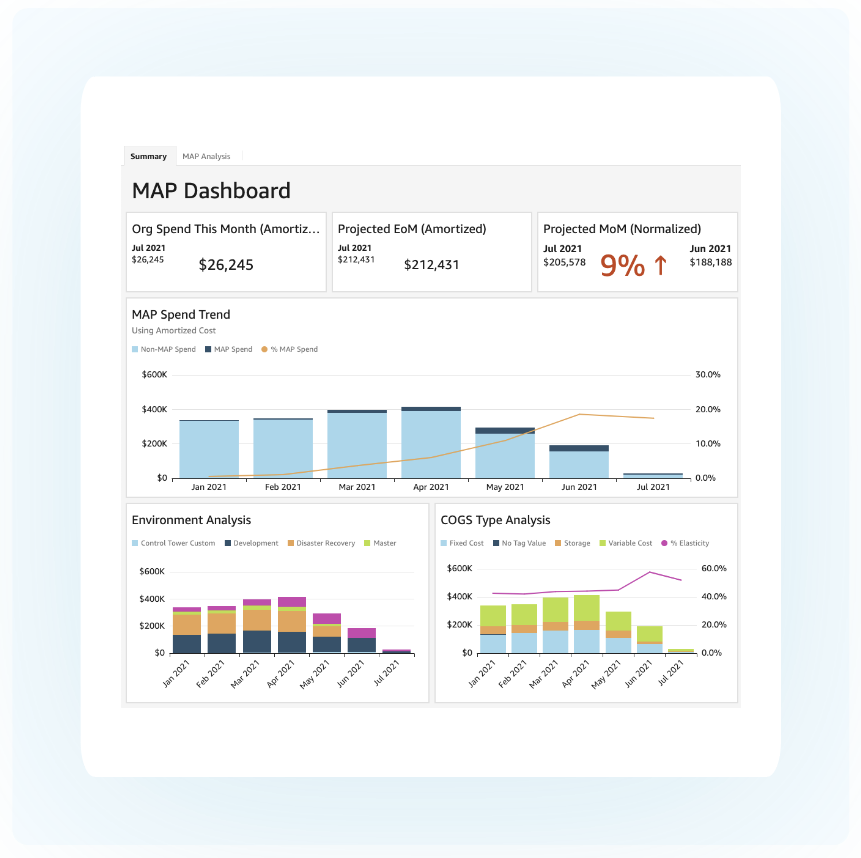
Yet, CloudZero’s anomaly detection engine alerts your team to trending costs so they can take action to avoid overspending. Slack or email, the choice is yours.
CloudZero’s approach not only helps AWS customers reduce costs, but it allows organizations to understand the what, where, and why of their cloud spend so they can make informed decisions that improve profitability — not just cut costs.  to see CloudZero in action.
to see CloudZero in action.
2. ProsperOps
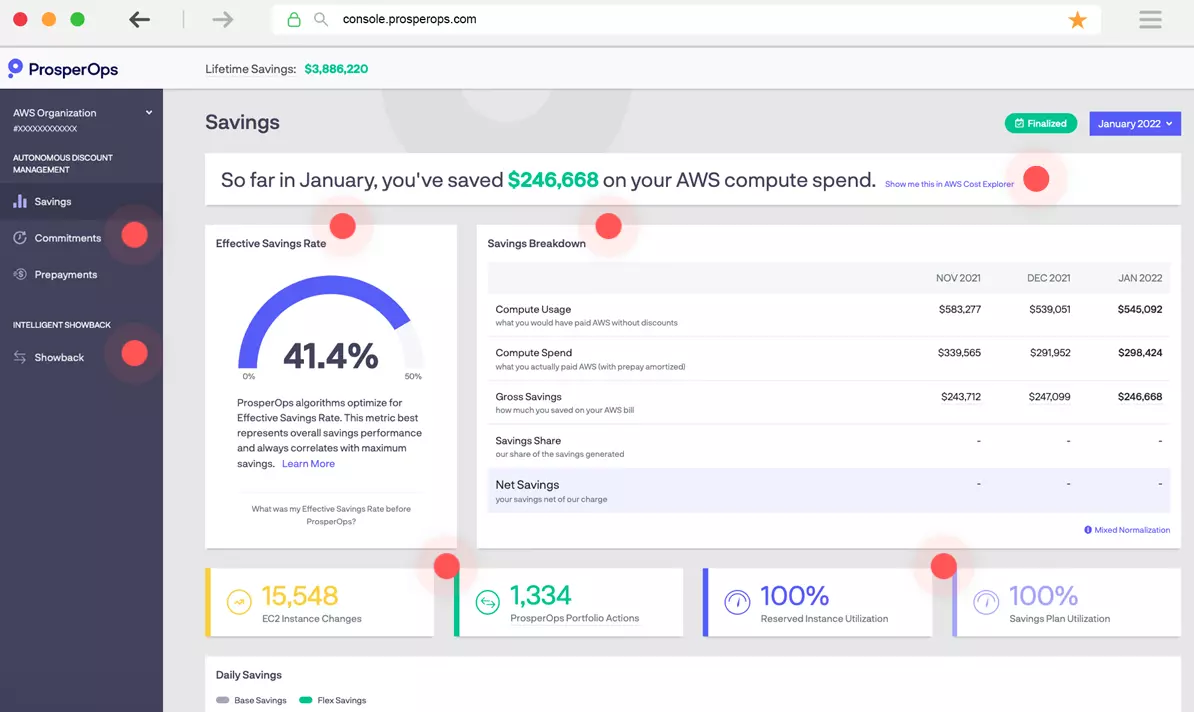
Year founded: 2018
Category: Autonomous AWS Savings Management
Best for: Companies looking to maximize the benefits of AWS’ Reserved Instances and Savings Plans
Pricing model: $0.05 per dollar saved on compute and $0.35 per dollar saved on optimized/purchased convertible reserved instances
ProsperOps uses advanced Artificial Intelligence (AI) algorithms to discover ways to utilize AWS Reserved Instances and Savings Plans best. It does this continuously so that you can integrate AWS cost savings into your engineering culture every moment of every day.
ProsperOps pays for itself, unlike many cloud cost optimization tools for AWS. It does that by charging only on savings instead of a percentage of your spending.
3. Xosphere
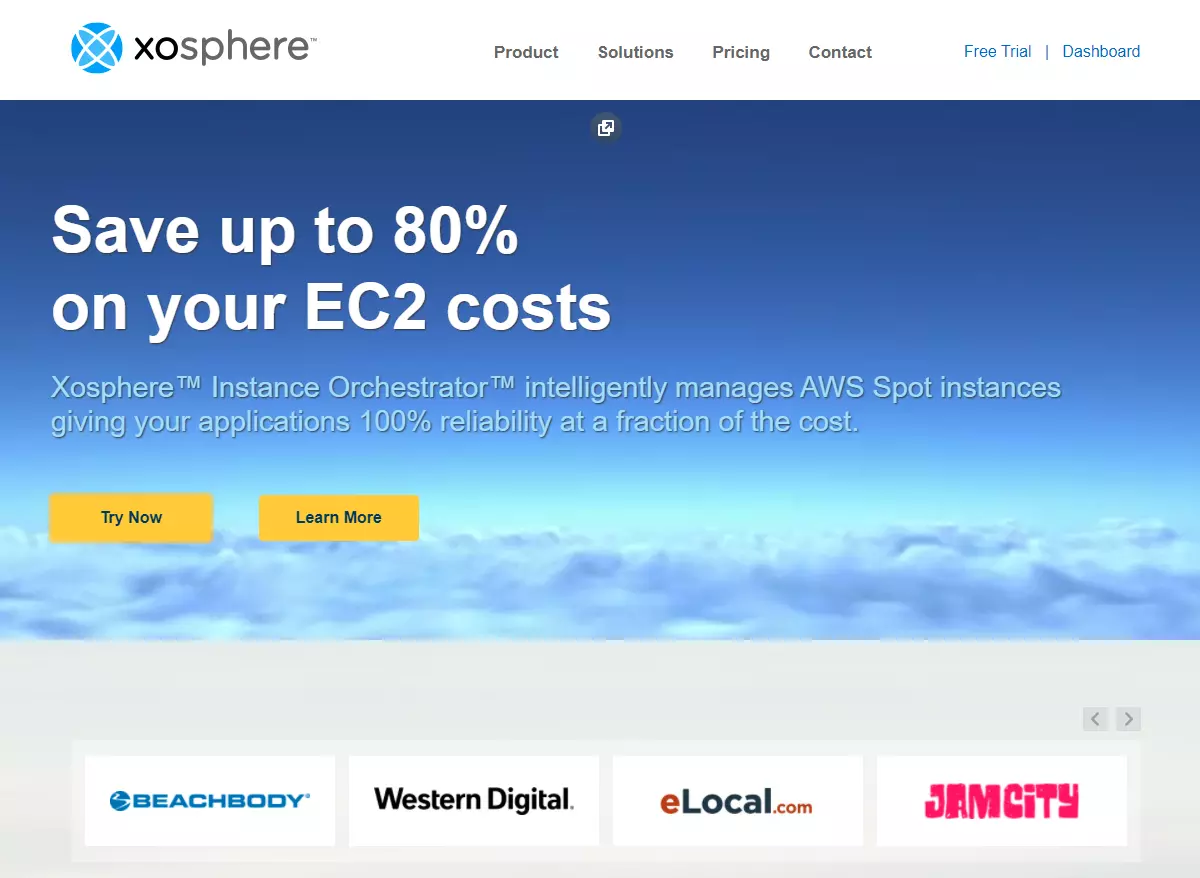
Year founded: 2017
Category: AWS Spot Instance Optimization
Best for: Companies looking to save money with Spot Instances and have Auto-Scaling groups or individual instances enabled through an AWS Tag.
Pricing model: Get a custom quote
AWS Spot instances can save you 80% compared to On-Demand Instances. However, you might have issues with performance or availability if Spot Instances become unavailable or uneconomical. That’s when Xosphere comes in.
Xosphere Instance Orchestrator continuously uses custom bidding to replace On-demand Instances with Spot Instances whenever the latter’s capacity is available at a reasonable price. When capacity and price turn unfavorable, the solution switches your system back to On-Demand Instances, just in time to prevent performance degradation, availability issues, or unexpected costs. Xosphere also works with containers.
4. AWS Cost Explorer
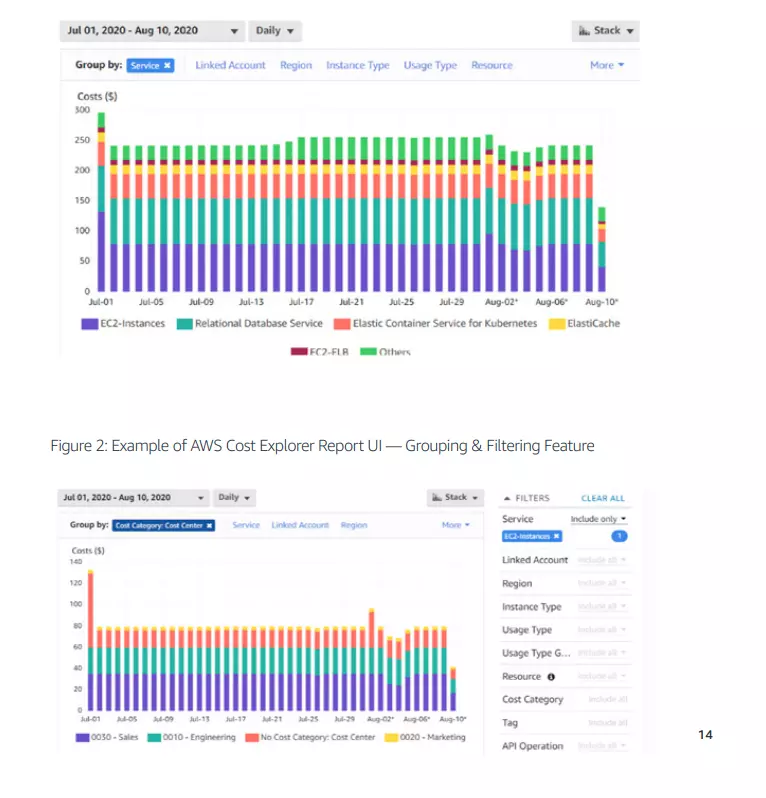
Year founded: 2014
Category: Native AWS cloud financial management tool
Best for: Companies that are just dipping their toes into cloud financial management in AWS and have modest infrastructure or a tight budget for cloud services
Pricing model: Comes free with an AWS subscription
Cost Explorer is an AWS interface that enables users to view and manage their AWS cloud usage and associated costs. The tool provides a unified view of all accounts’ total cost and resource consumption.
As an administrator, you can set a custom timeframe for analyzing your system’s data, such as monthly or daily. In this way, you can identify usage trends and cost patterns that will help you forecast and allocate AWS costs more efficiently.
5. Amazon CloudWatch
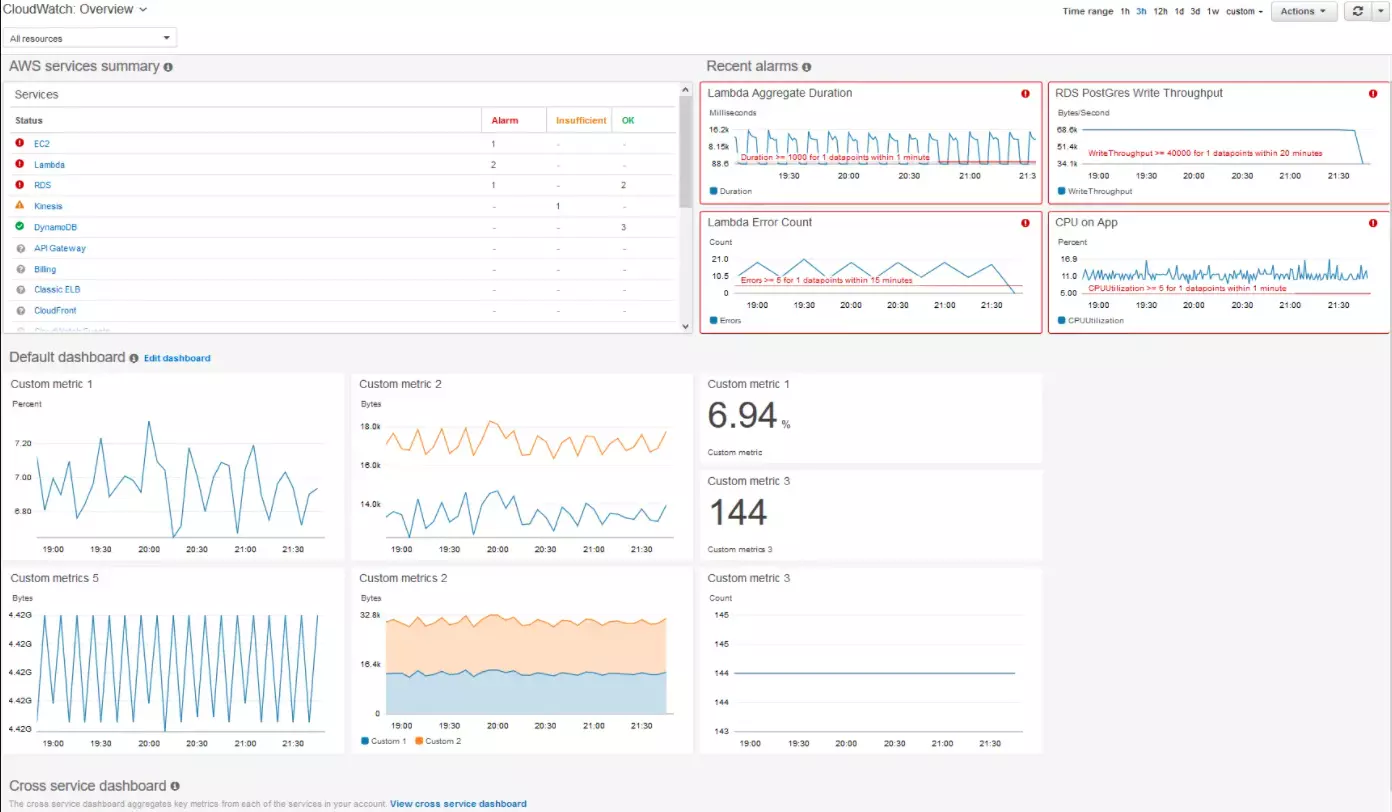
Year founded: 2009
Category: Native AWS monitoring and management tool
Best for: Businesses looking for a more detailed way to visualize, understand, and control AWS usage and costs without a third-party solution
Pricing model: Free tier, paid tier (see more about CloudWatch pricing here)
CloudWatch is a cloud monitoring, observability, and management solution built into the AWS ecosystem. Like CloudCheckr, it tracks resource utilization and system-wide performance changes through logs, metrics, and events.
Your DevOps and FinOps teams can visualize the performance and availability of their AWS applications, services, and resources with it. Besides AWS, you can use it on-premises or in a hybrid cloud. This empowers teams to detect anomalous behavior in their environments.
Using CloudWatch Alarms, you can set alerts that trigger automated responses to abnormal behavior, so you can continually maintain system availability, performance, and cost governance.
6. CloudHealth
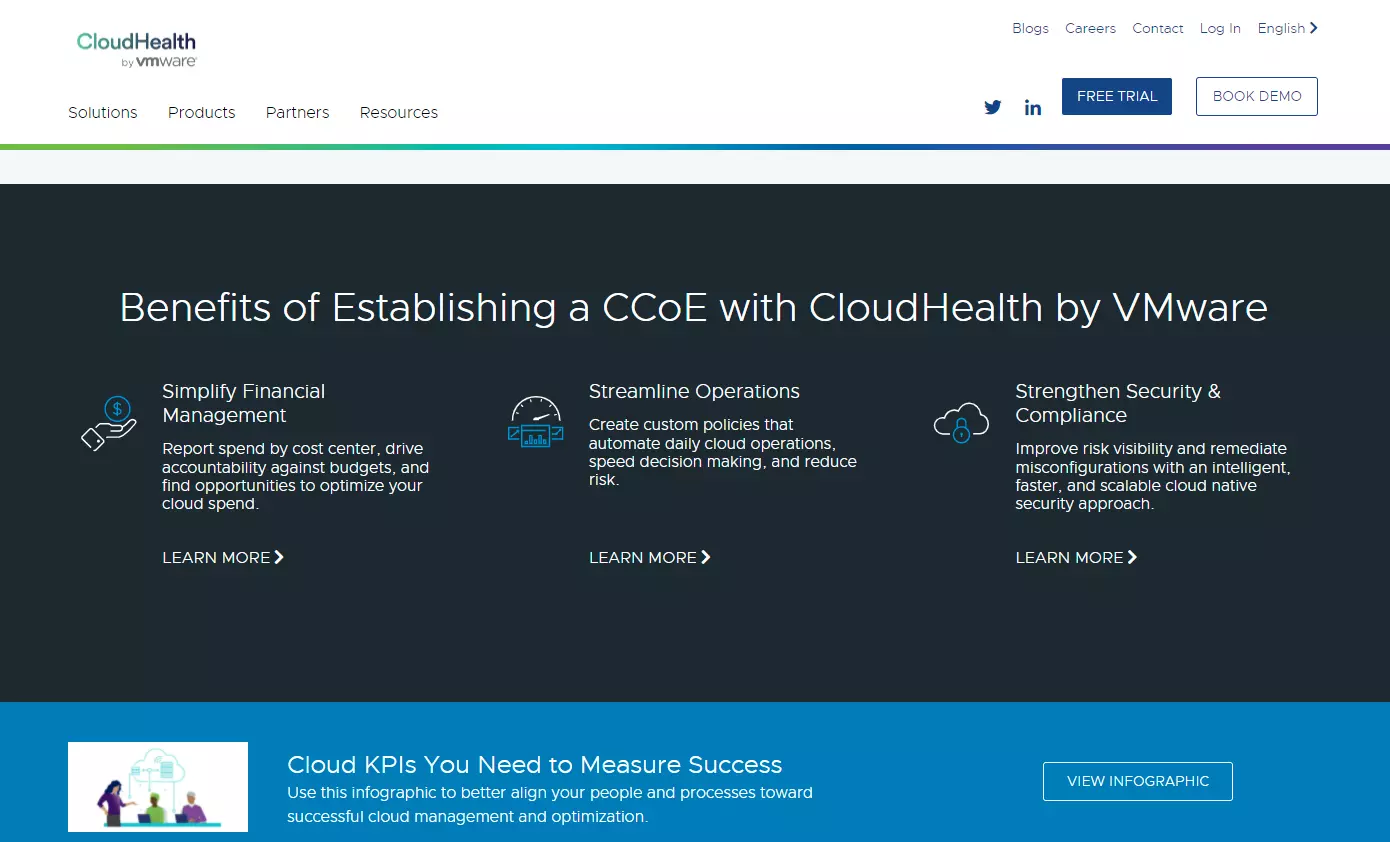
Year founded: 2012
Category: Traditional cloud cost management
Best for: Enterprises with hybrid cloud and multi-cloud use cases
Pricing model: Flat rate up to $100,000 monthly spend, then 3% of monthly spend
VMware’s CloudHealth is a cloud management platform that streamlines cloud security, governance, and compliance. You can leverage the platform to manage your cloud at scale, including AWS, Azure, GCP, and OCI, as well as to manage your data center.
It also uses traditional approaches to improve cloud financial management. With CloudHealth, you can rightsize your cloud resources to reduce cloud waste, get recommendations to reduce your cloud bill, and continuously monitor cloud consumption against your budget.
7. CloudBolt
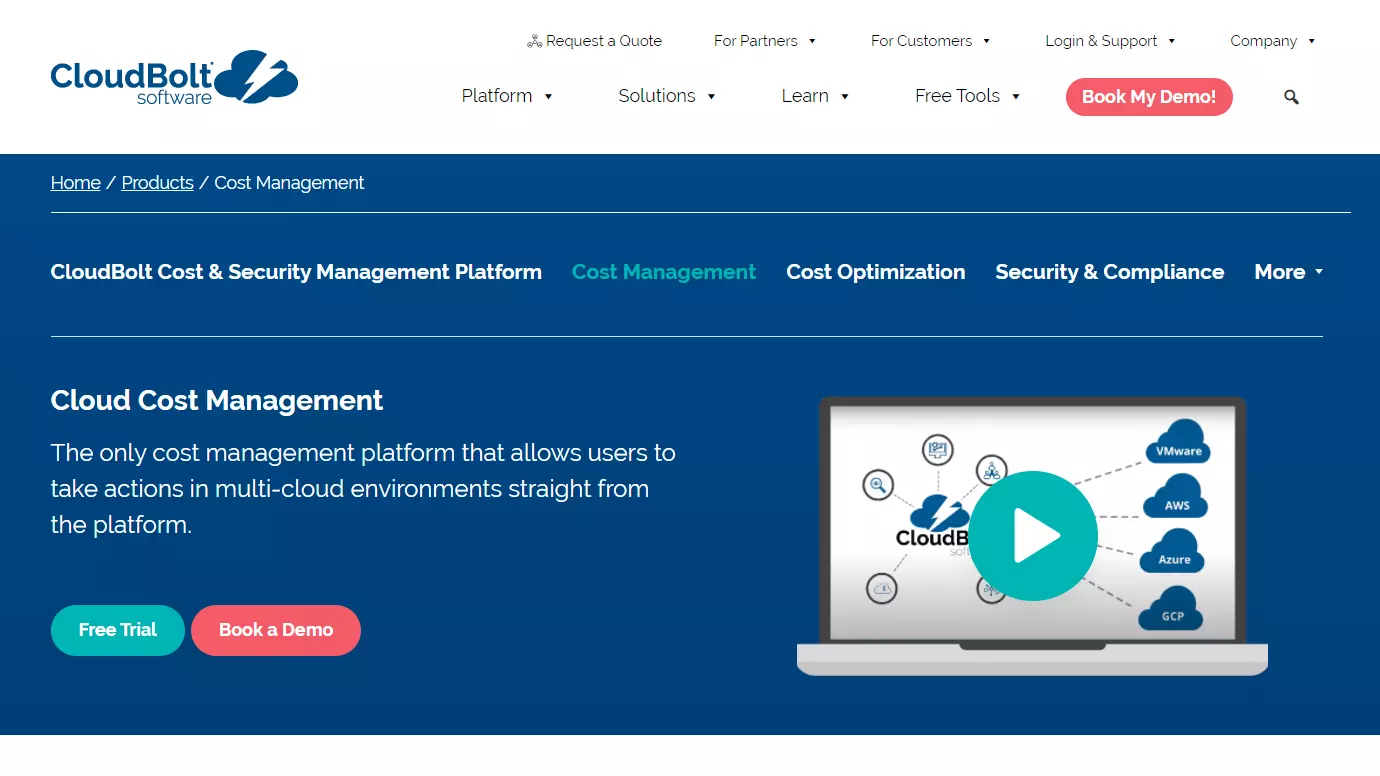
Year founded: 2012
Category: Automated Multi-cloud Cost Management
Best for: Companies looking to optimize hybrid cloud resources continuously
Pricing model: $8,500 per year starting price
CloudBolt is like CloudCheckr because it provides cloud cost management, optimization, security, compliance, and governance tools. Yet it also empowers your DevOps and FinOps teams to take cost management and optimization actions within multi-cloud environments.
CloudBolt provides a single platform for analyzing multiple cloud environments, generating cost and usage reports, as well as governing your public cloud. If you want a self-service-style platform for all that, CloudBolt lets your team access it from anywhere and anytime.
Switch From Your Legacy Cost Tool To Cloud Cost Intelligence
Here’s the thing. Most tools rely too heavily on AWS Tags to capture cloud cost indicators. CloudZero’s Cloud Cost Intelligence is different. CloudZero meets you where you are in your tagging strategy — providing immediate visibility whether your tags are perfect, or a total mess.
Moreover, CloudZero enables engineers, finance professionals, and executives to explore their AWS bill in more detail, leading to more valuable insights. Rather than seeing total cloud costs in tedious rows and columns like this:
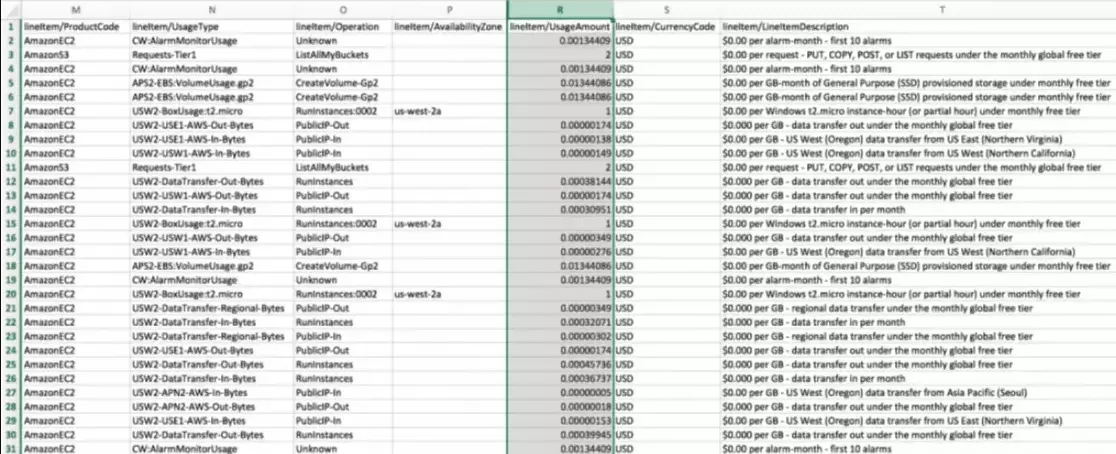
CloudZero platform takes cost data and breaks it down into granular, actionable cost insights that make sense to your business, like this:
This way, you can identify who, when, why, and how your costs change. As a result, you get just the right data to know where to tighten up or make tradeoffs to reduce your cloud costs without compromising ideal performance and smooth customer experiences.
With this cost insight, teams can also align in a cost-aware culture to develop cost-effective solutions that customers love. For instance, engineers and finance can work together in a FinOps team to determine whether a specific feature is viable enough to move to a higher price point or just decommission it.

